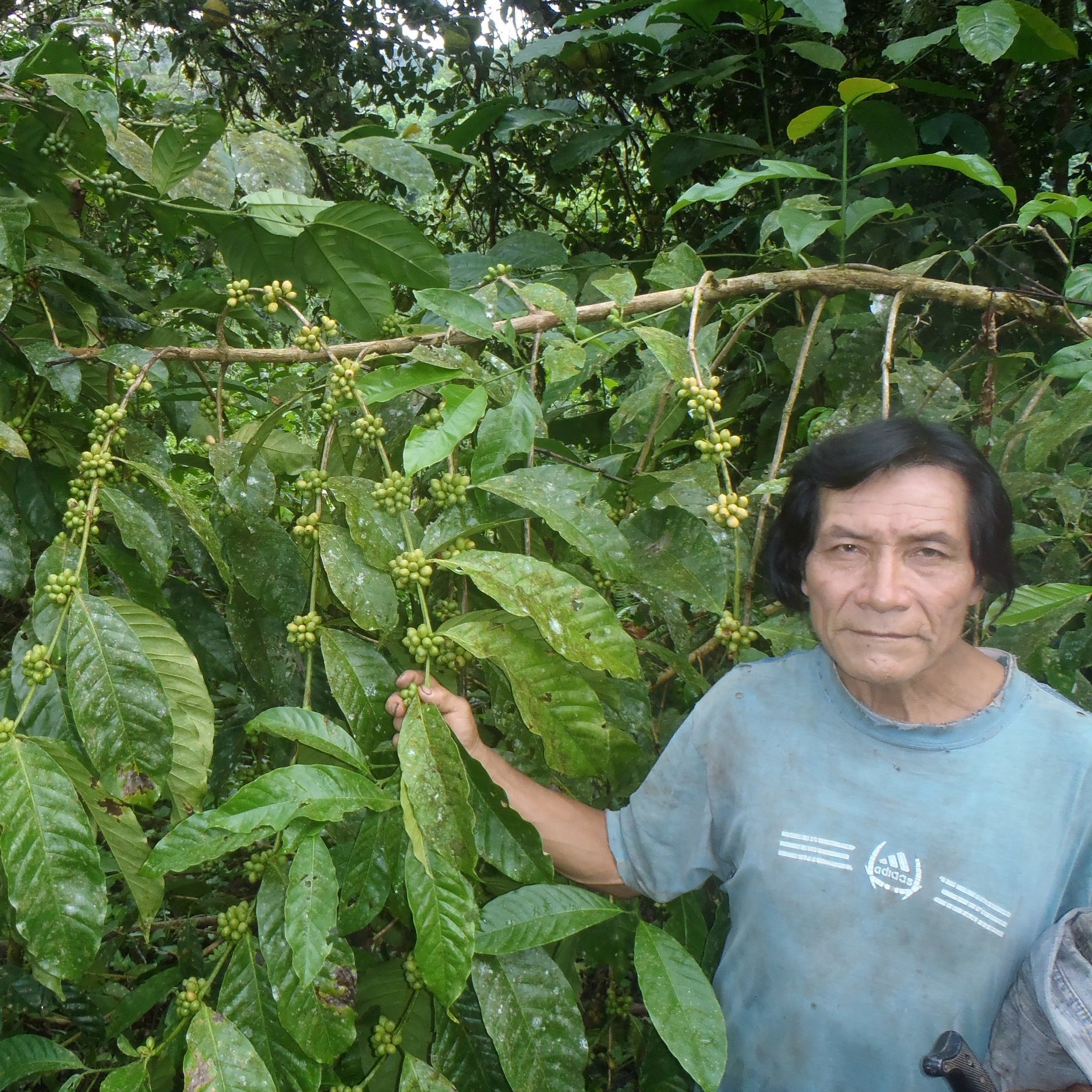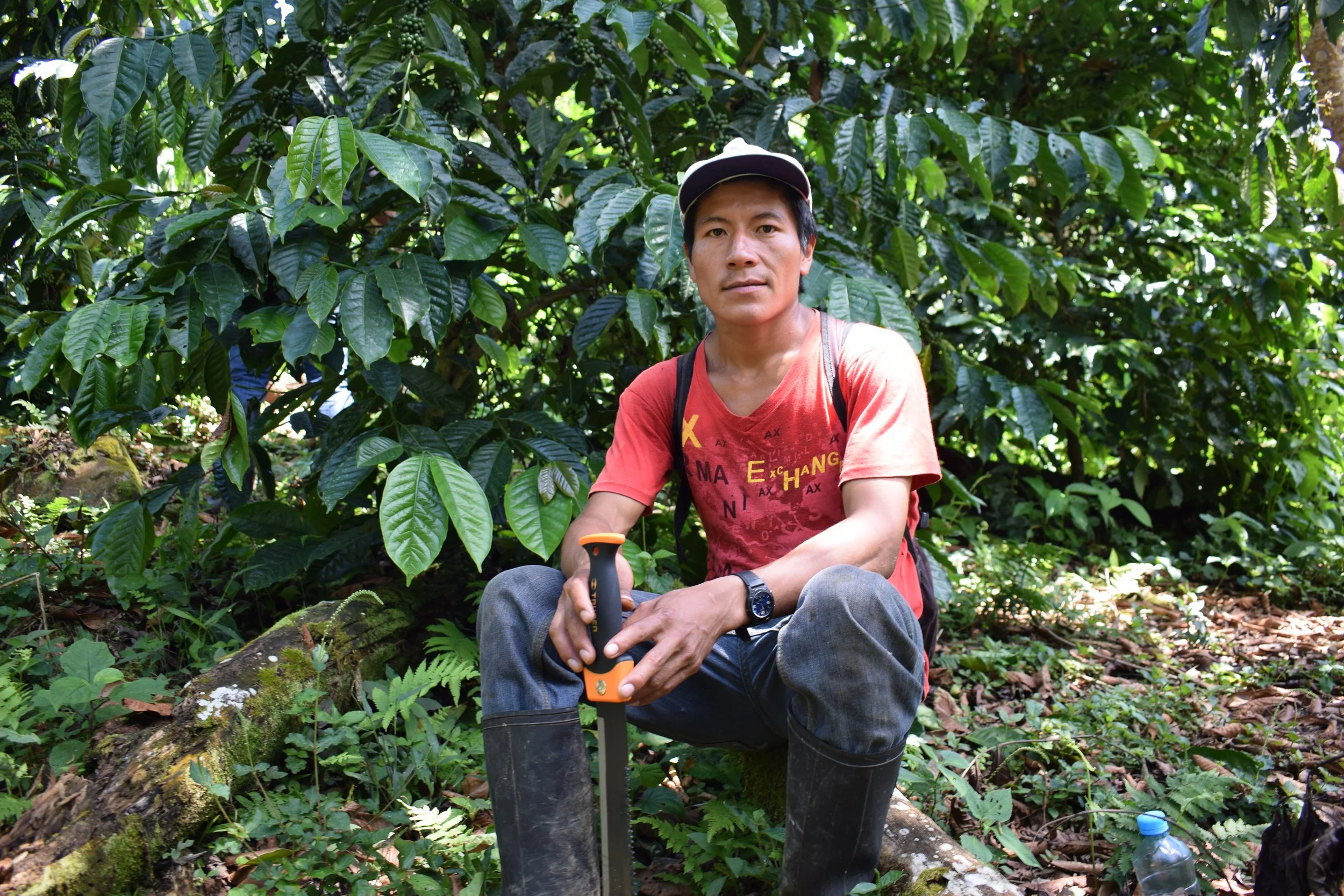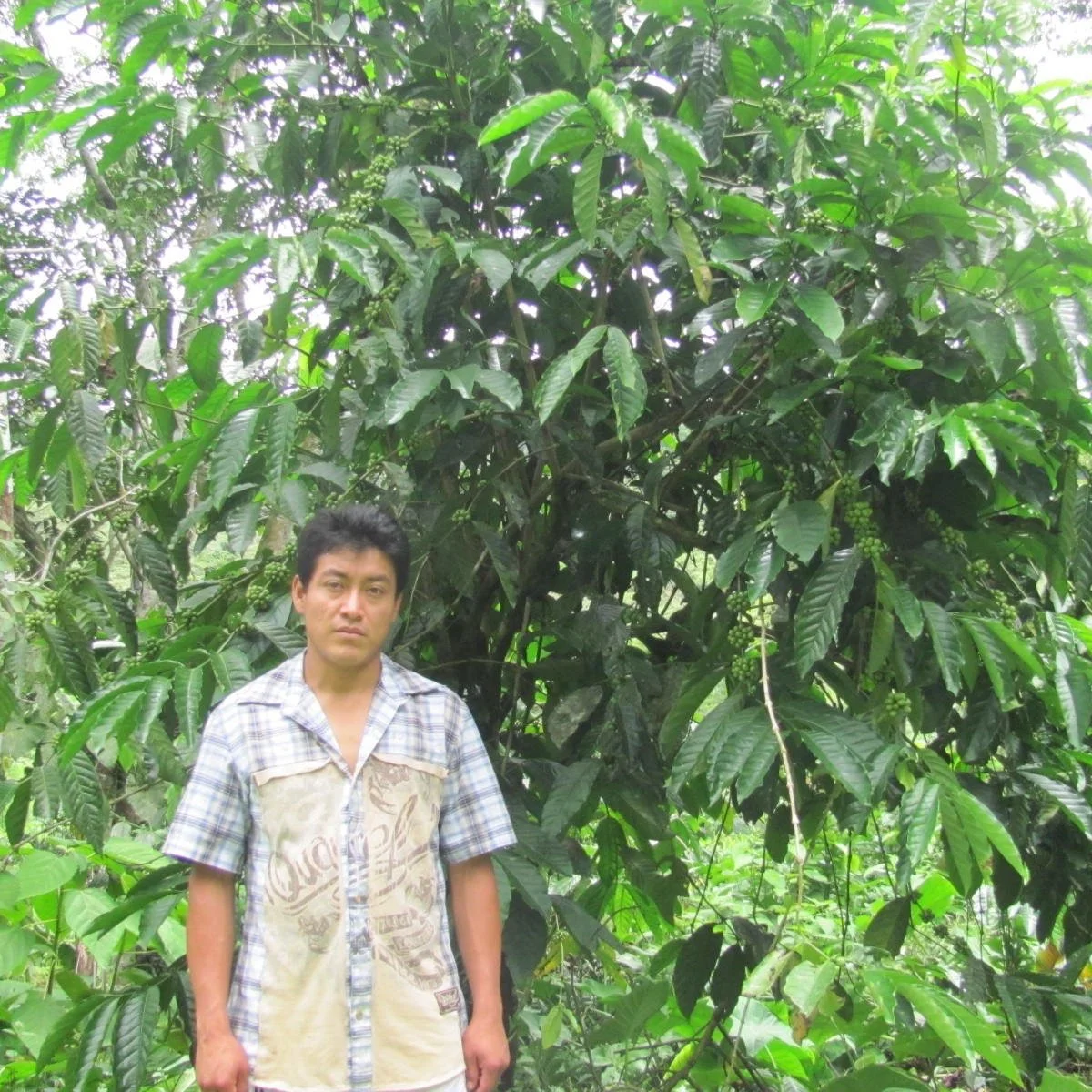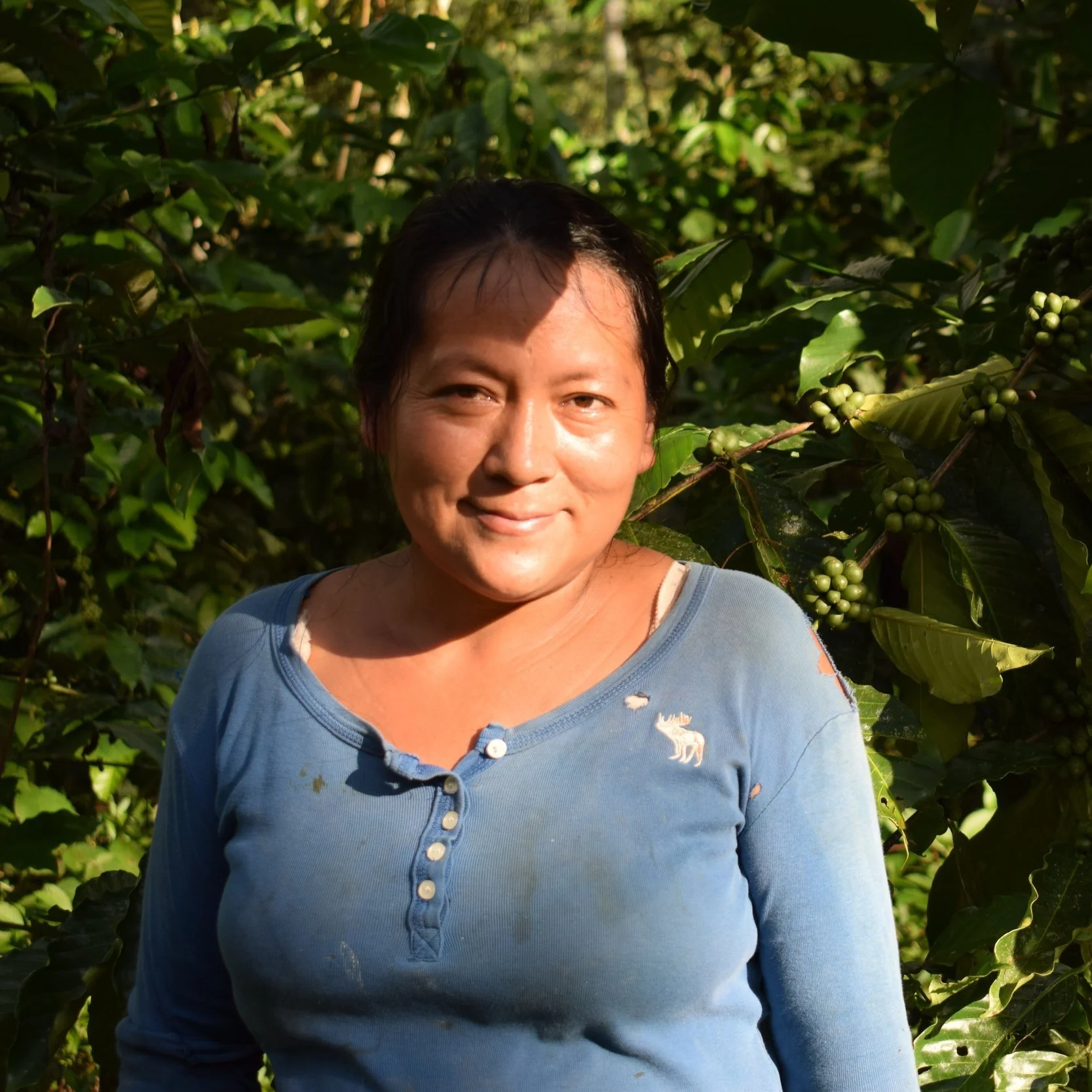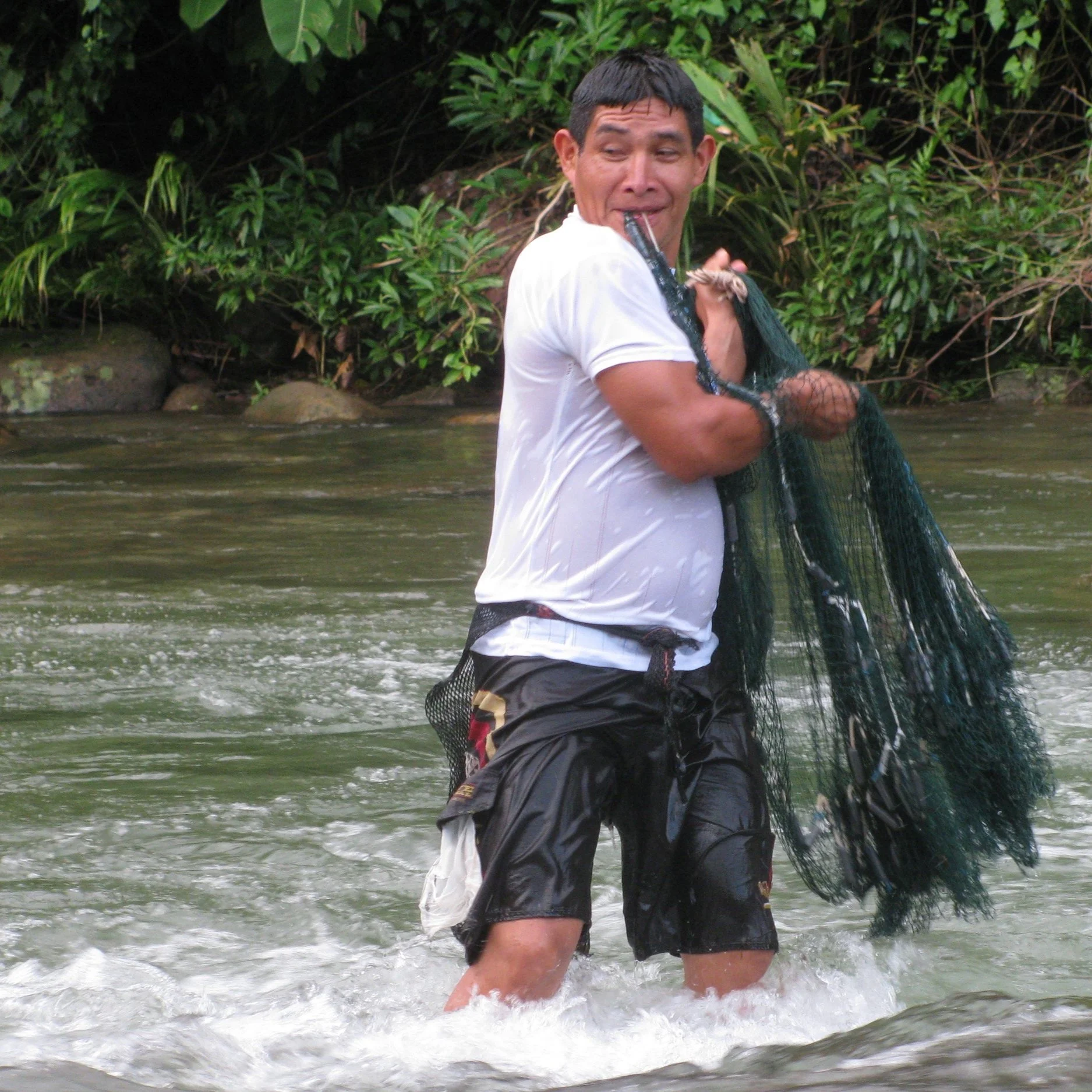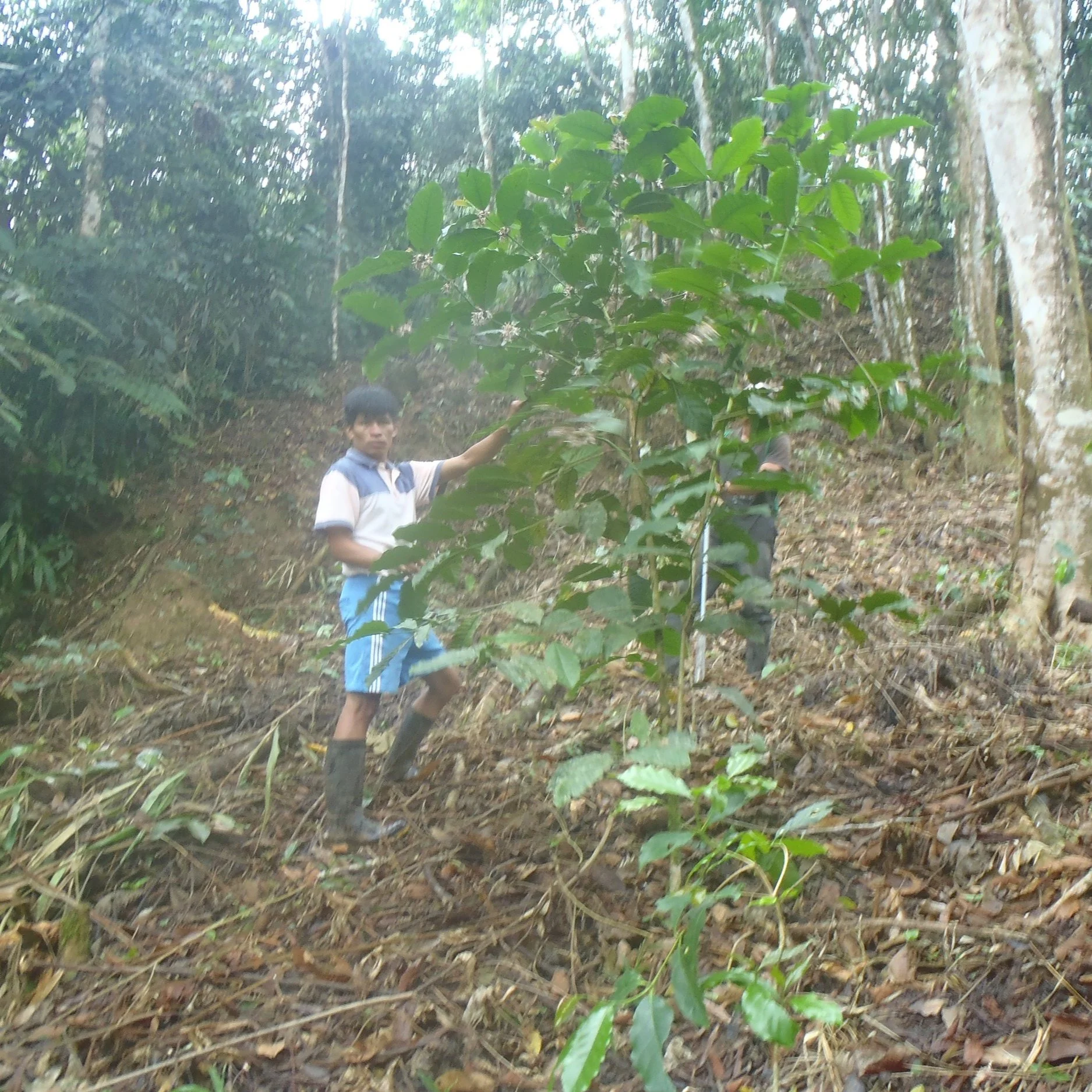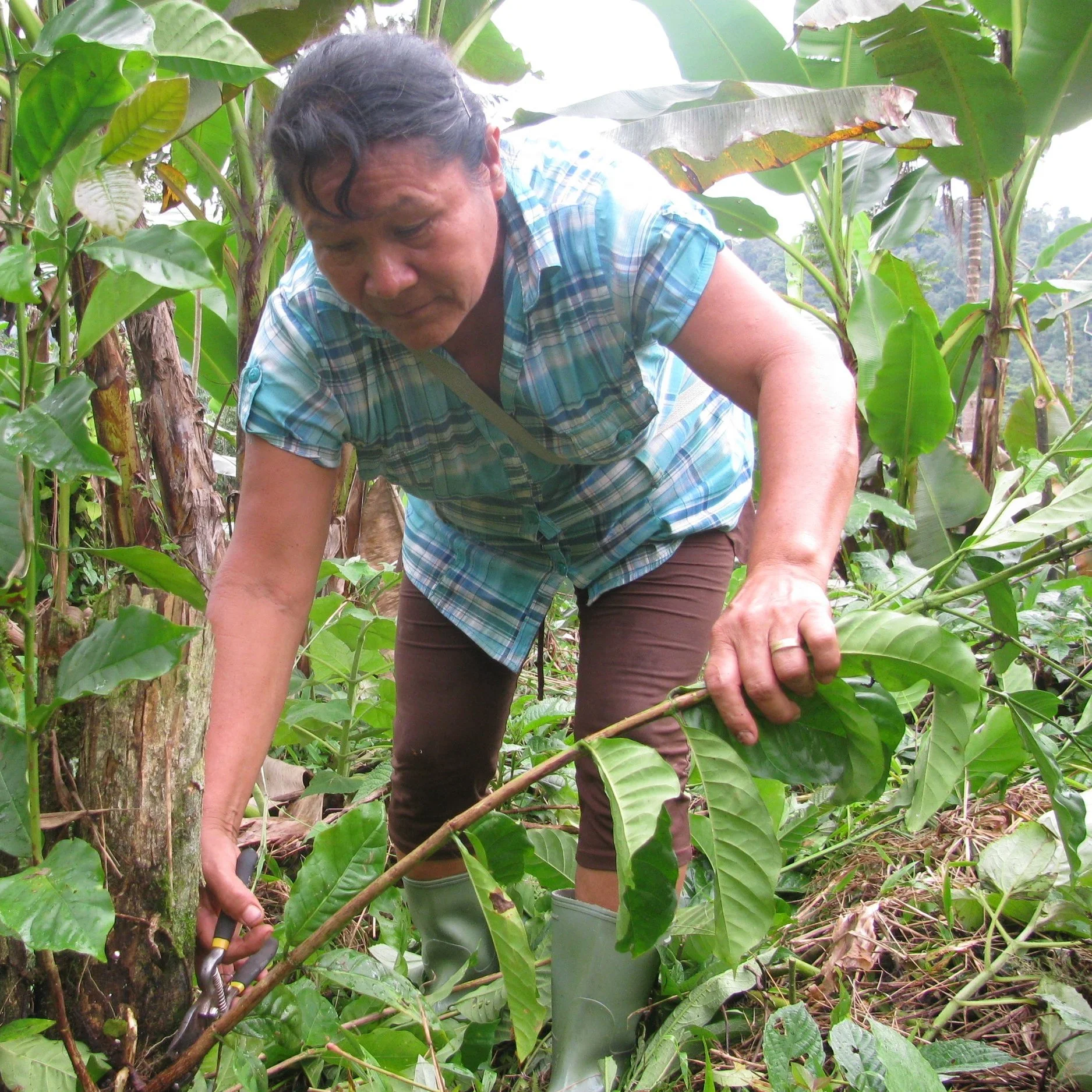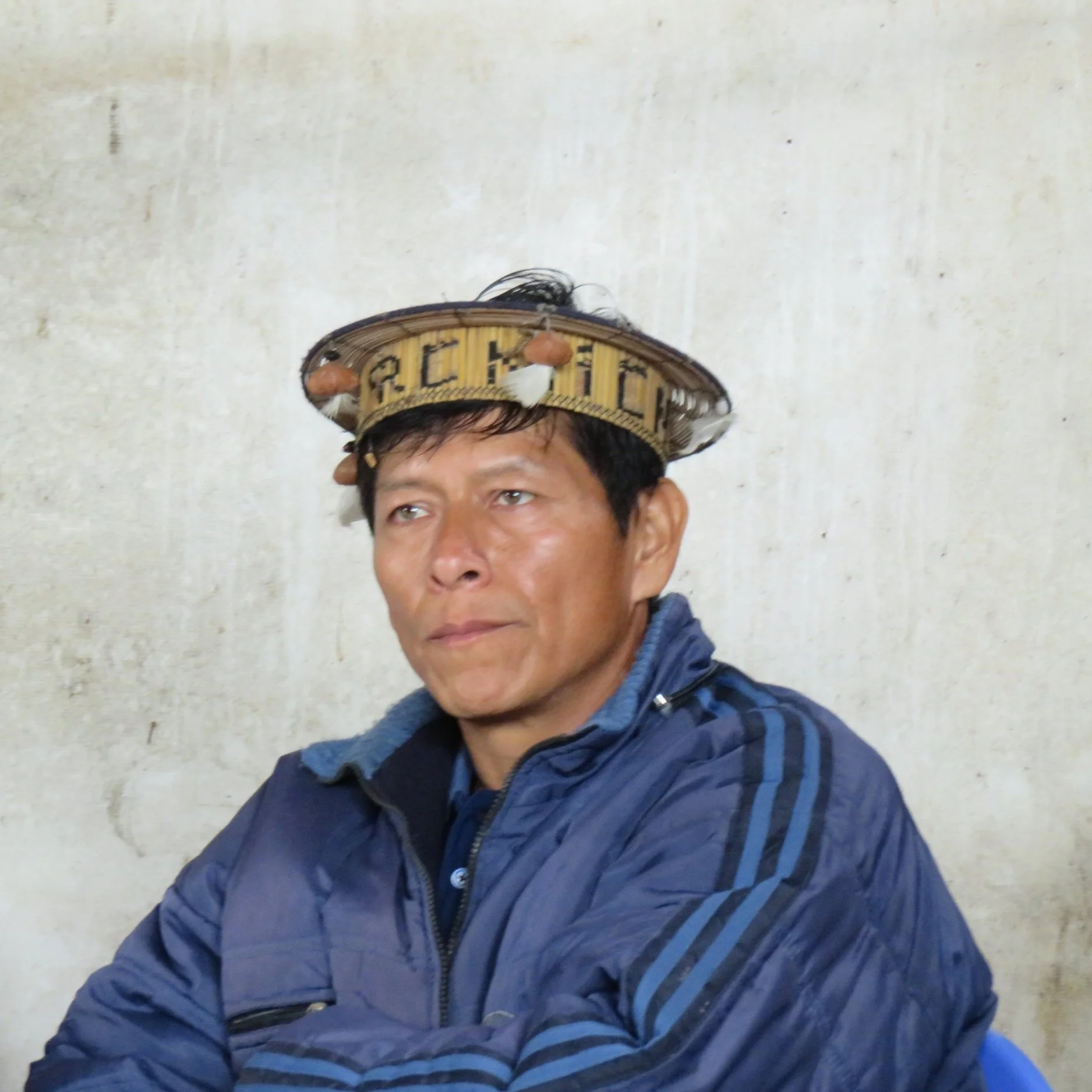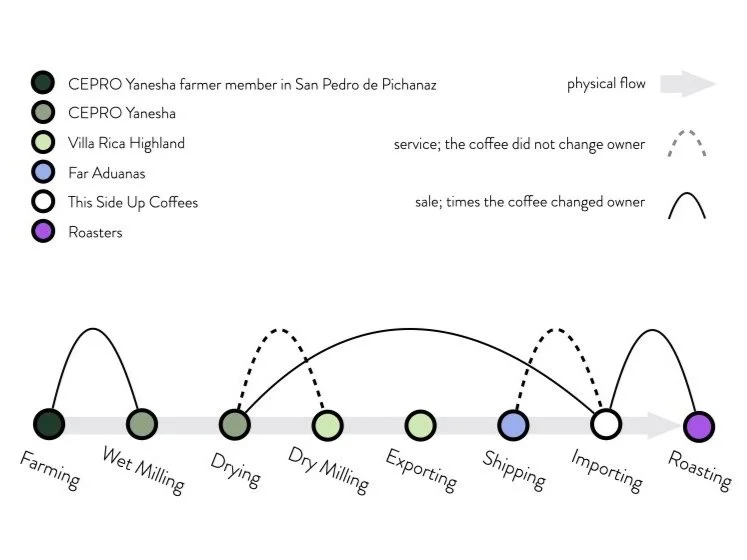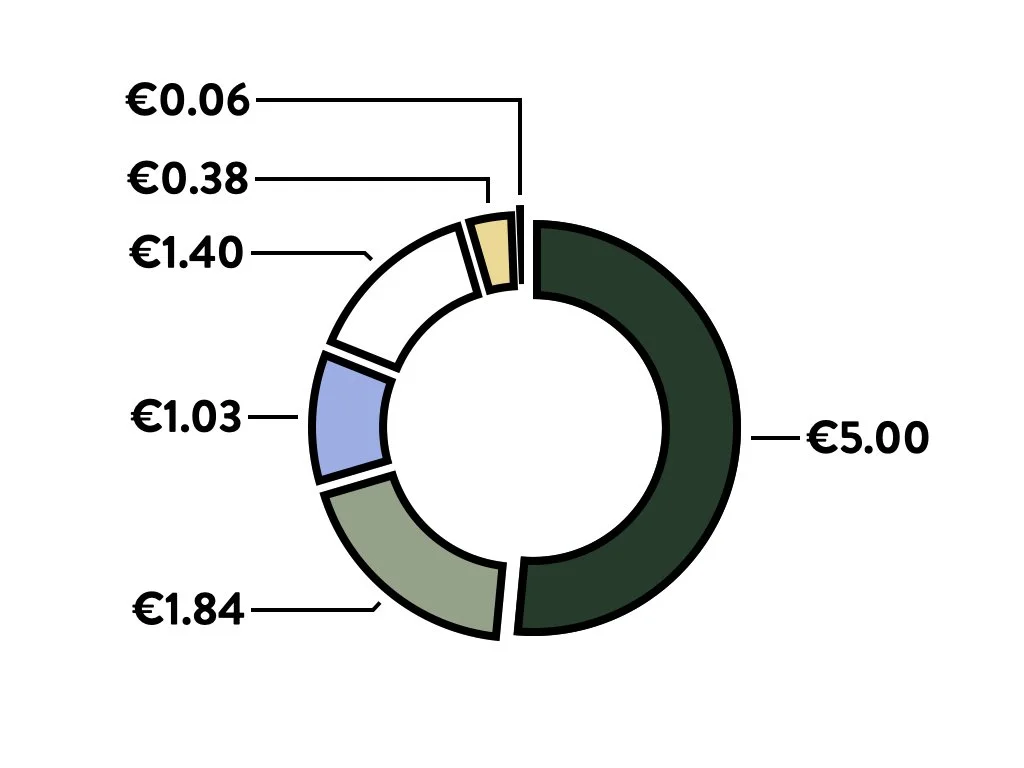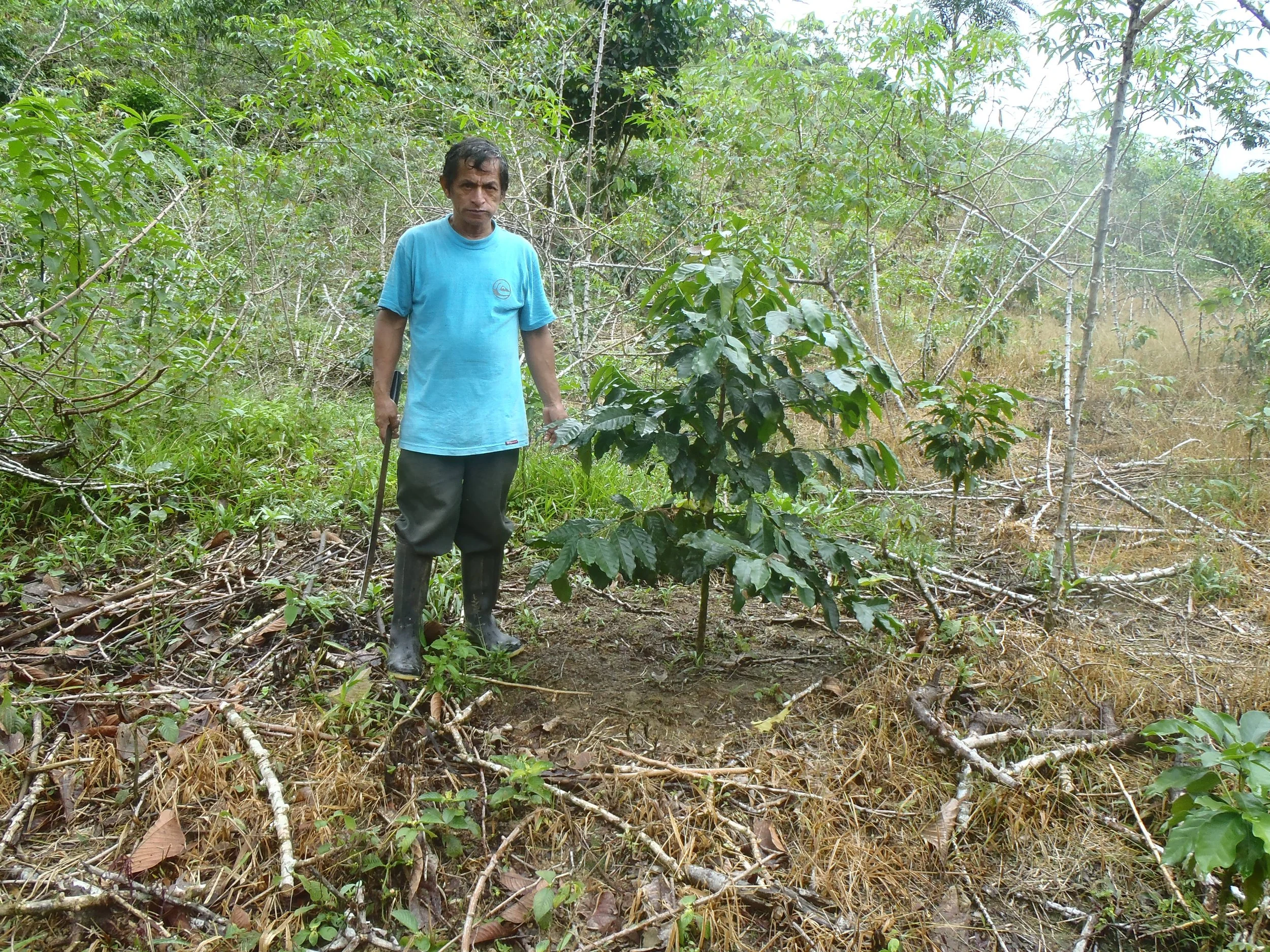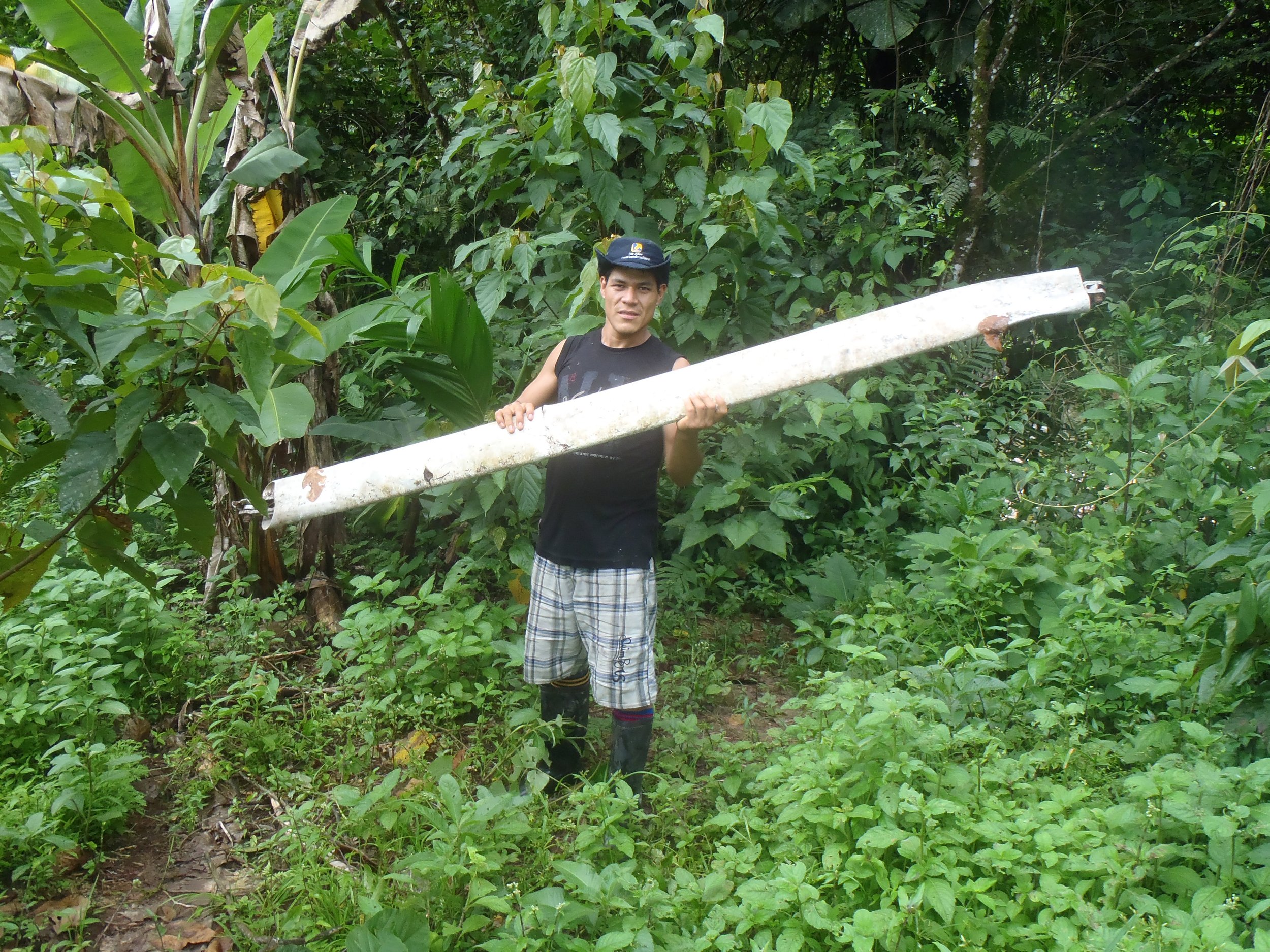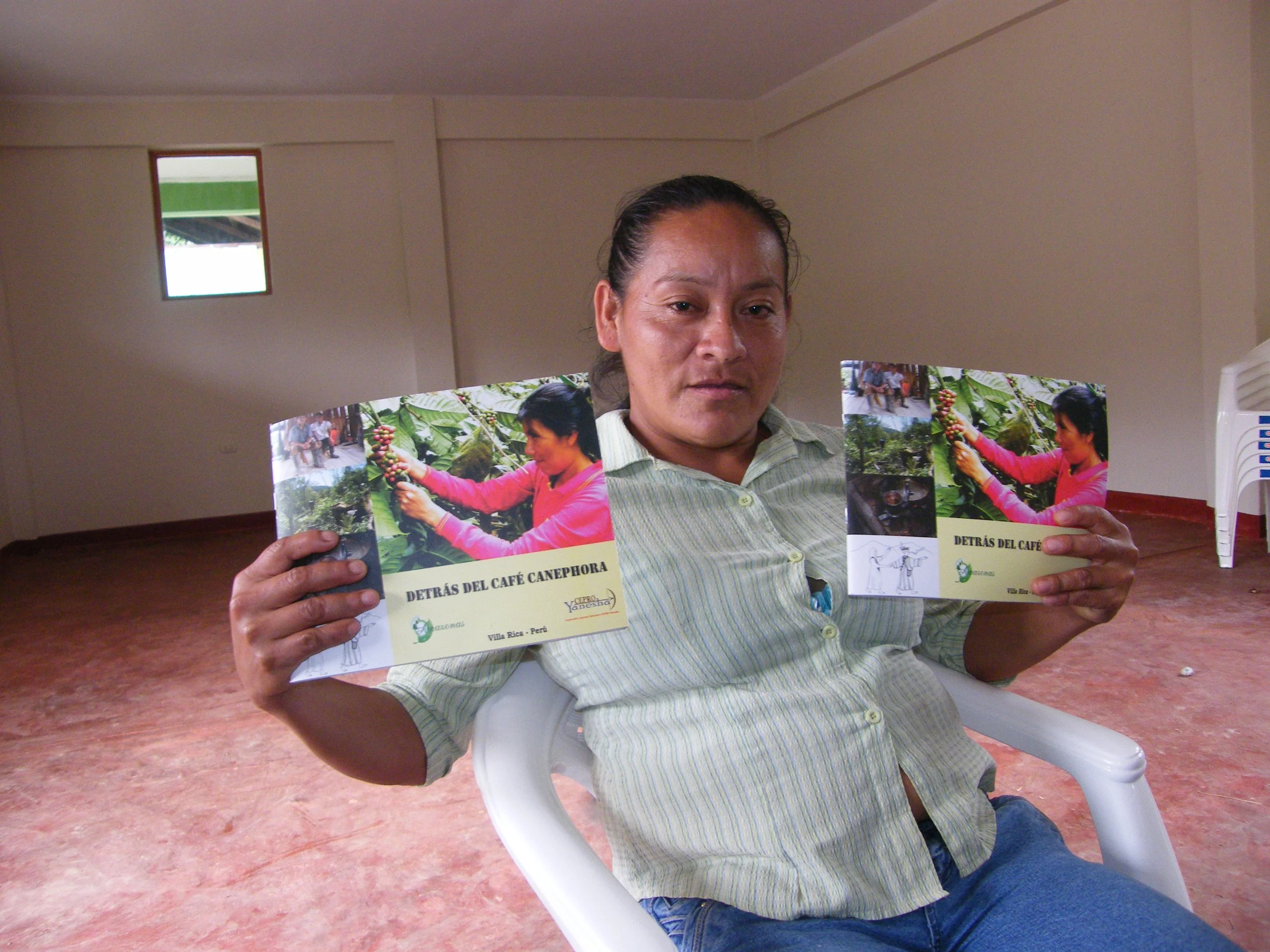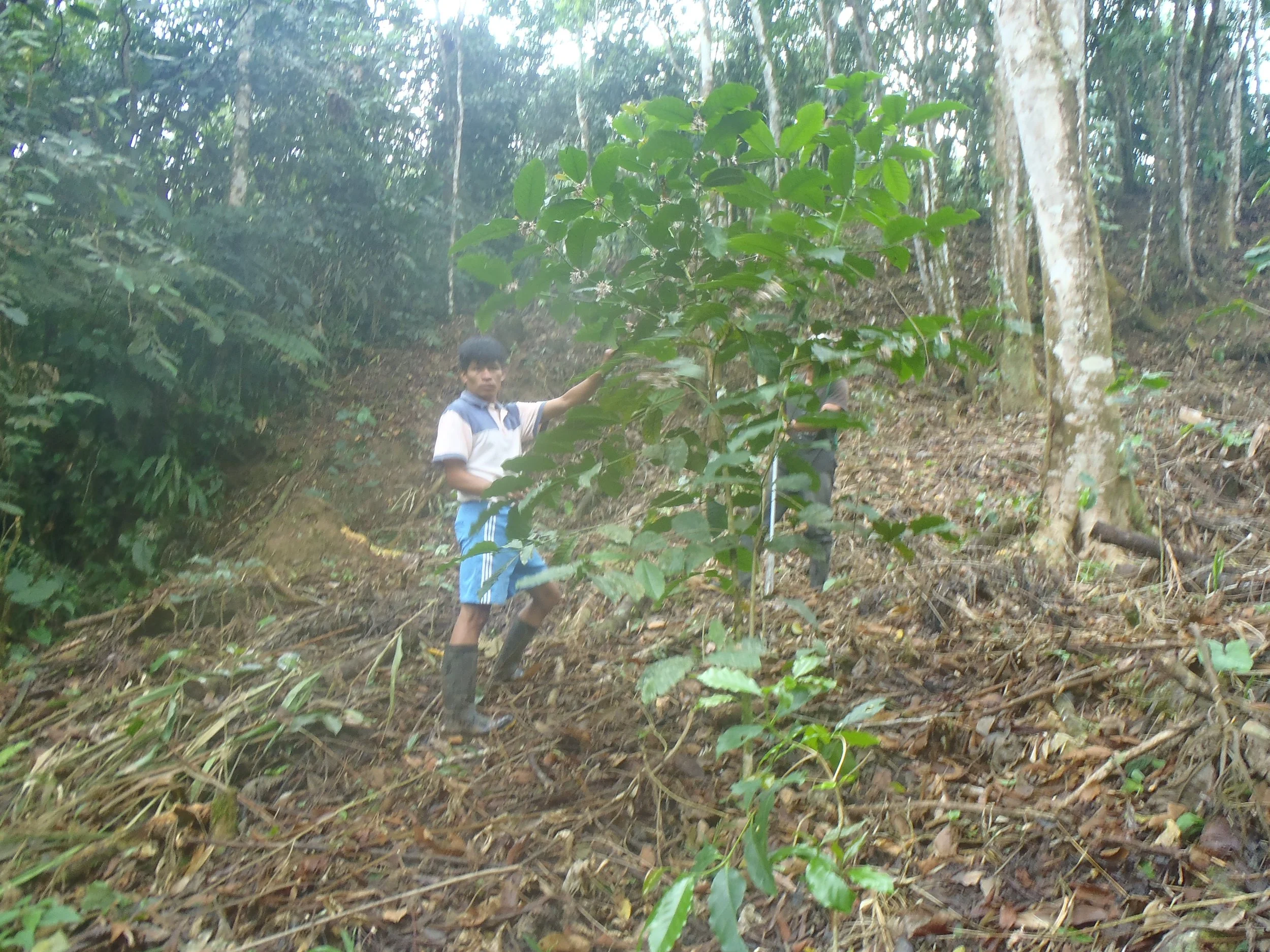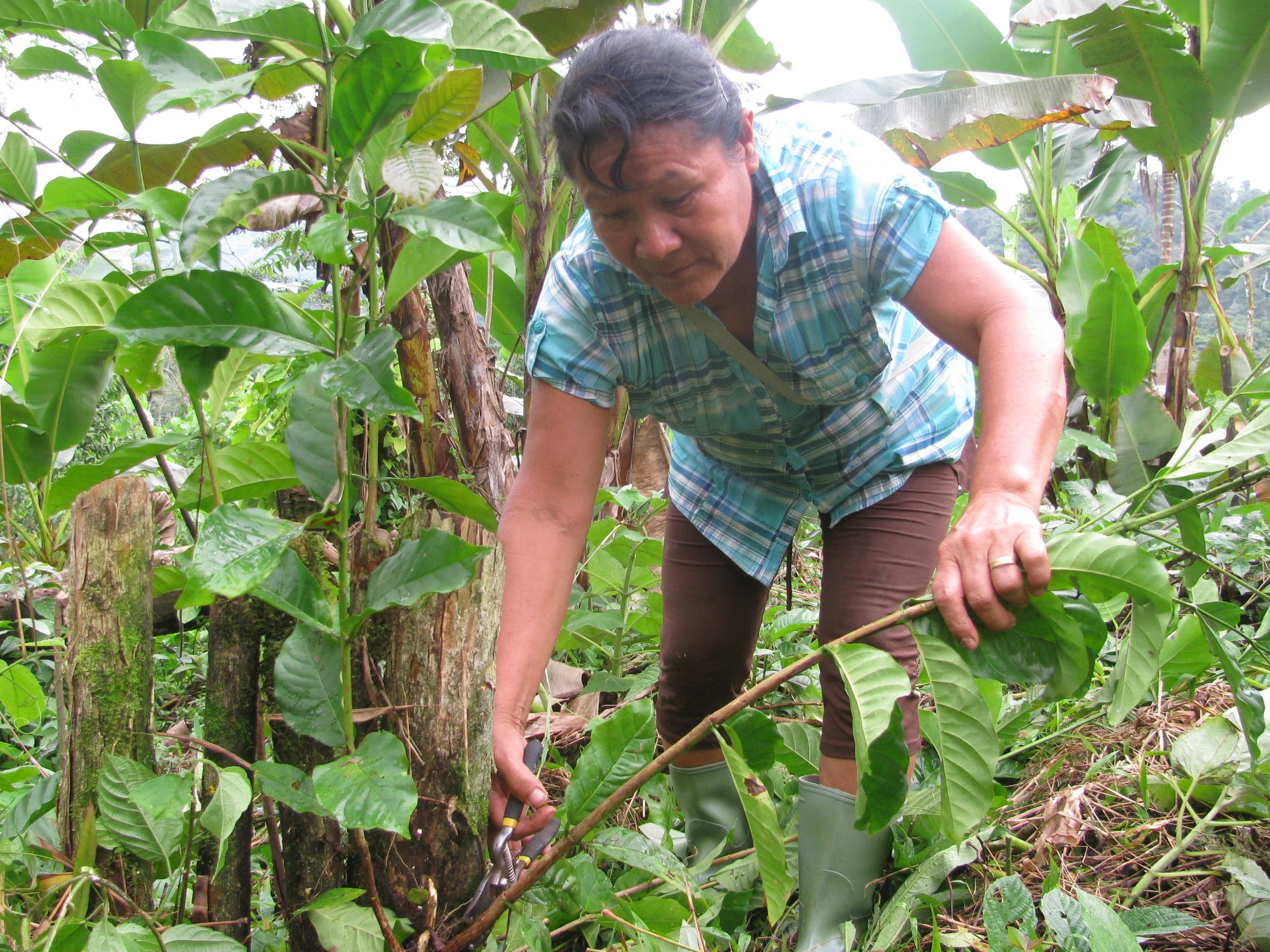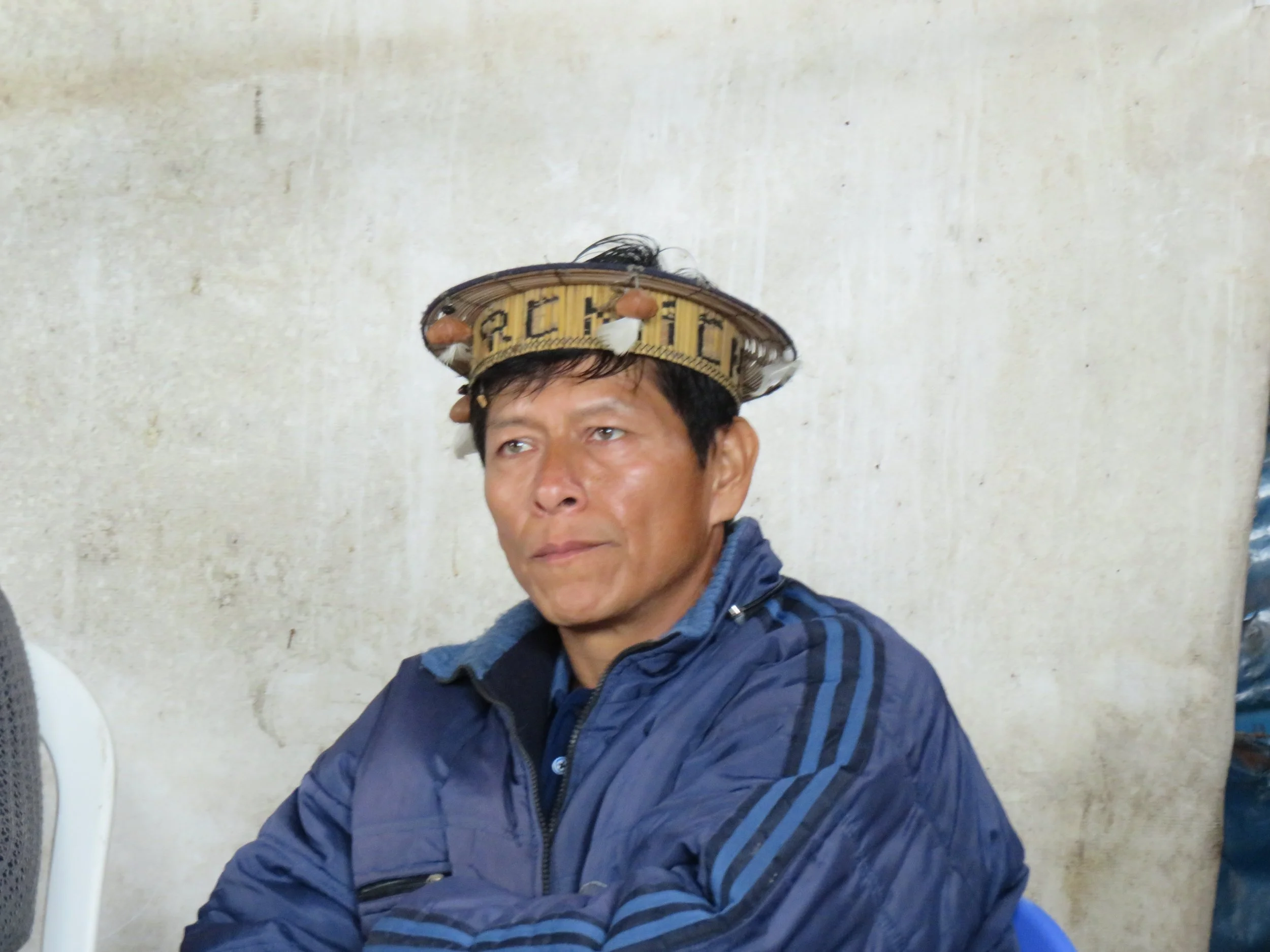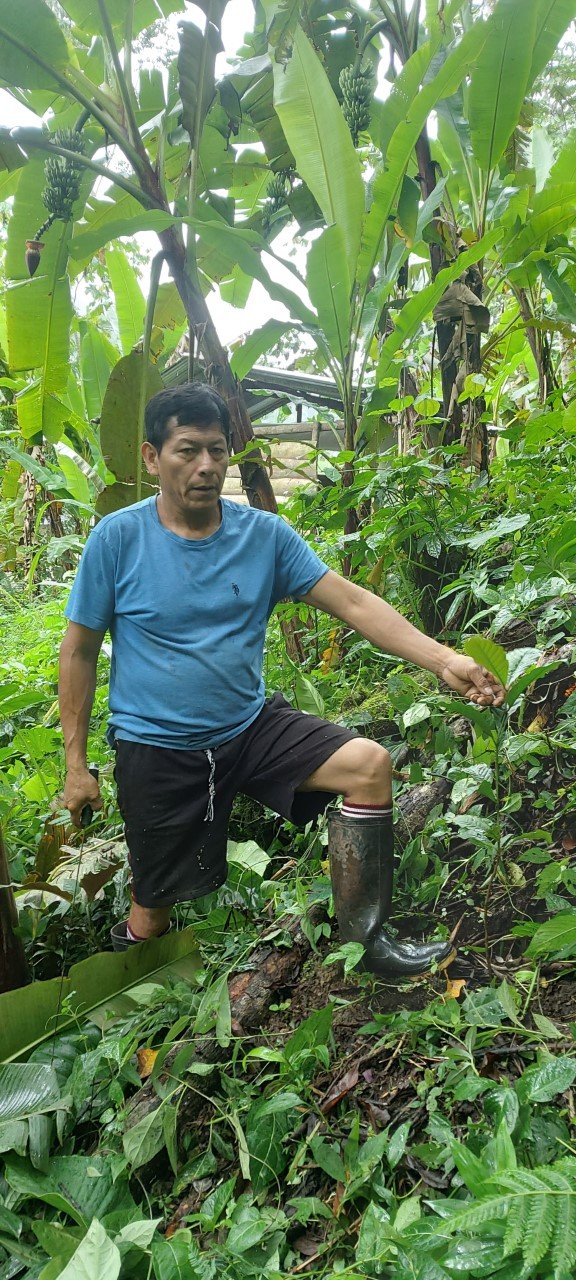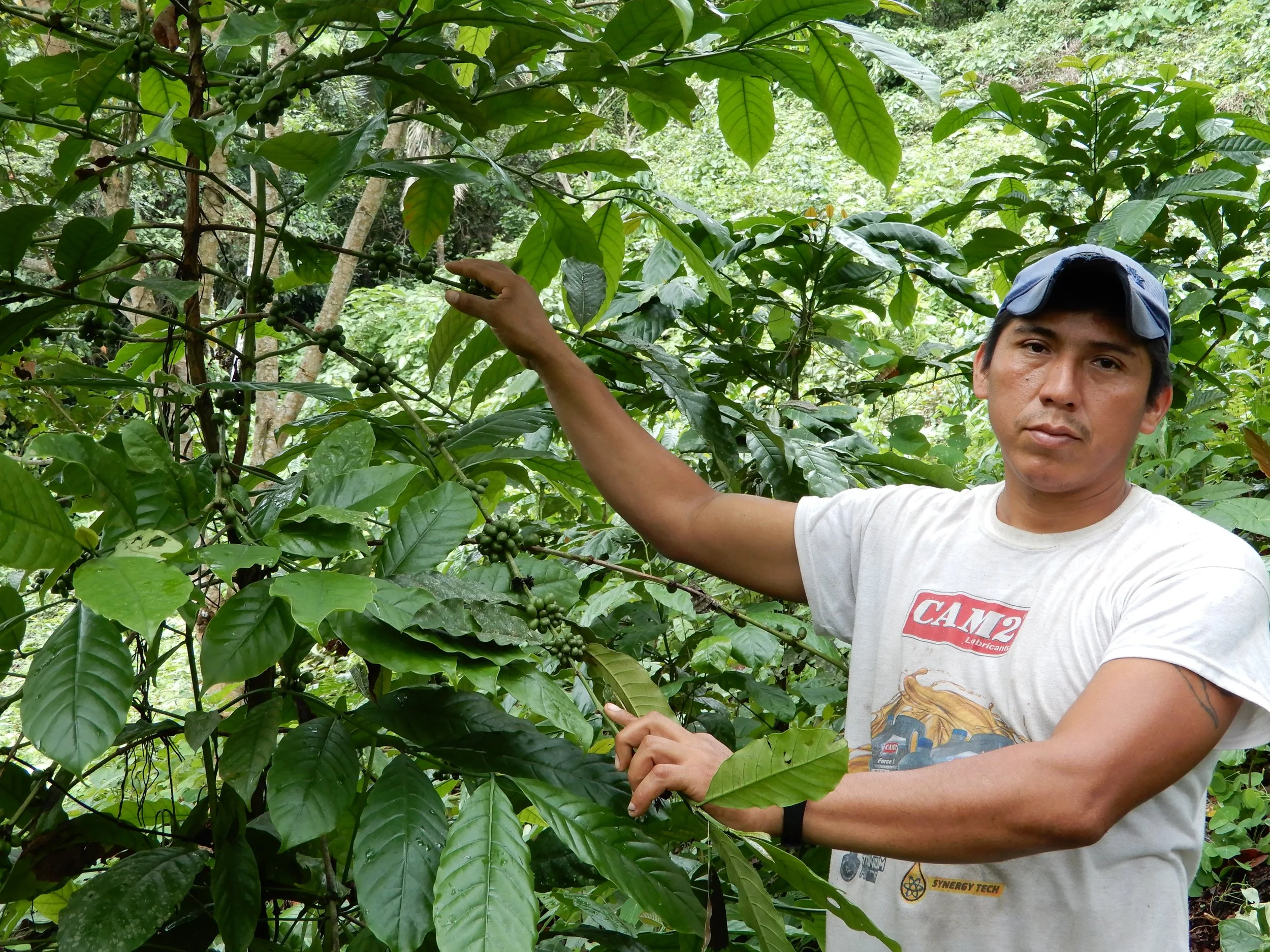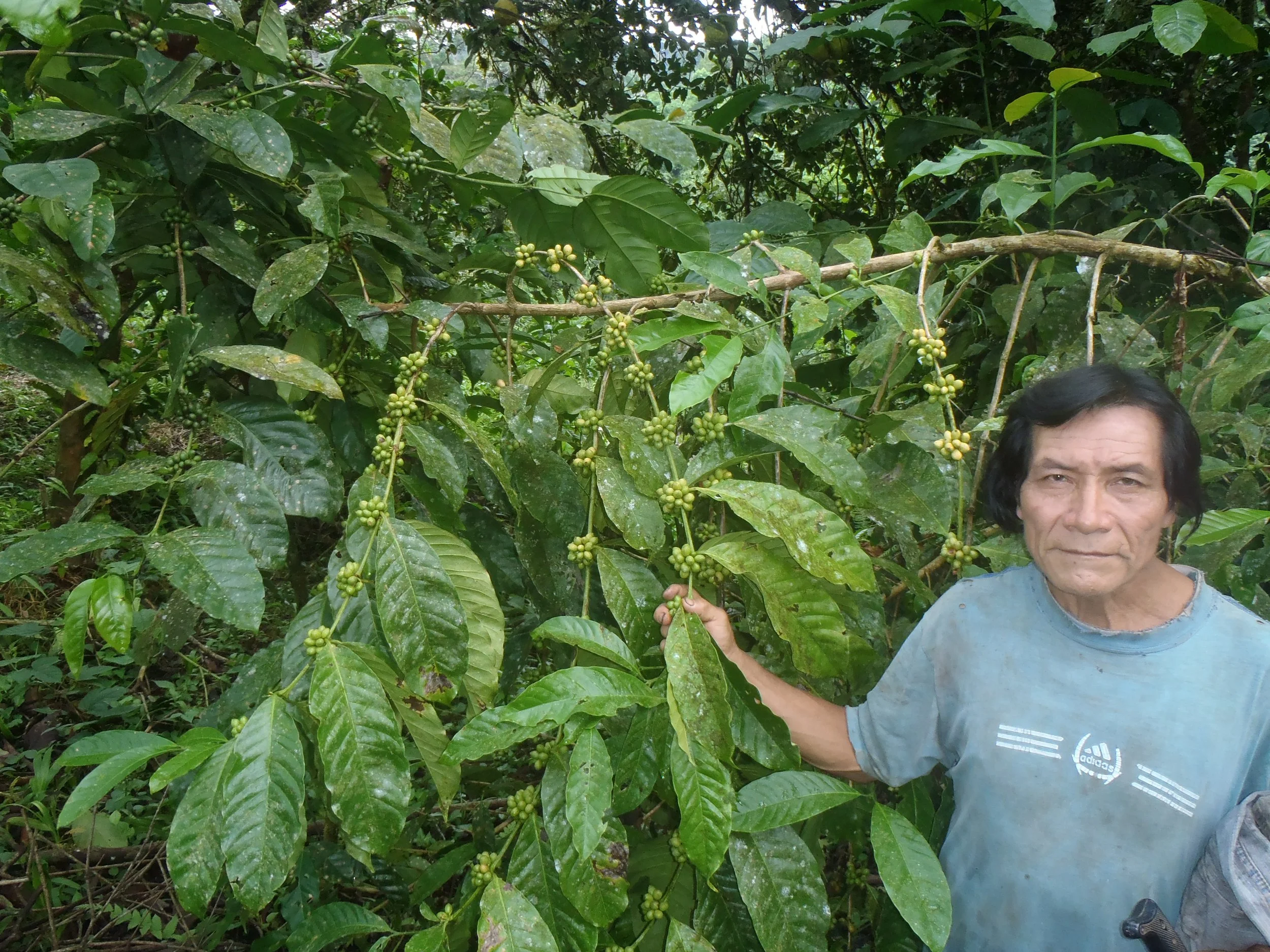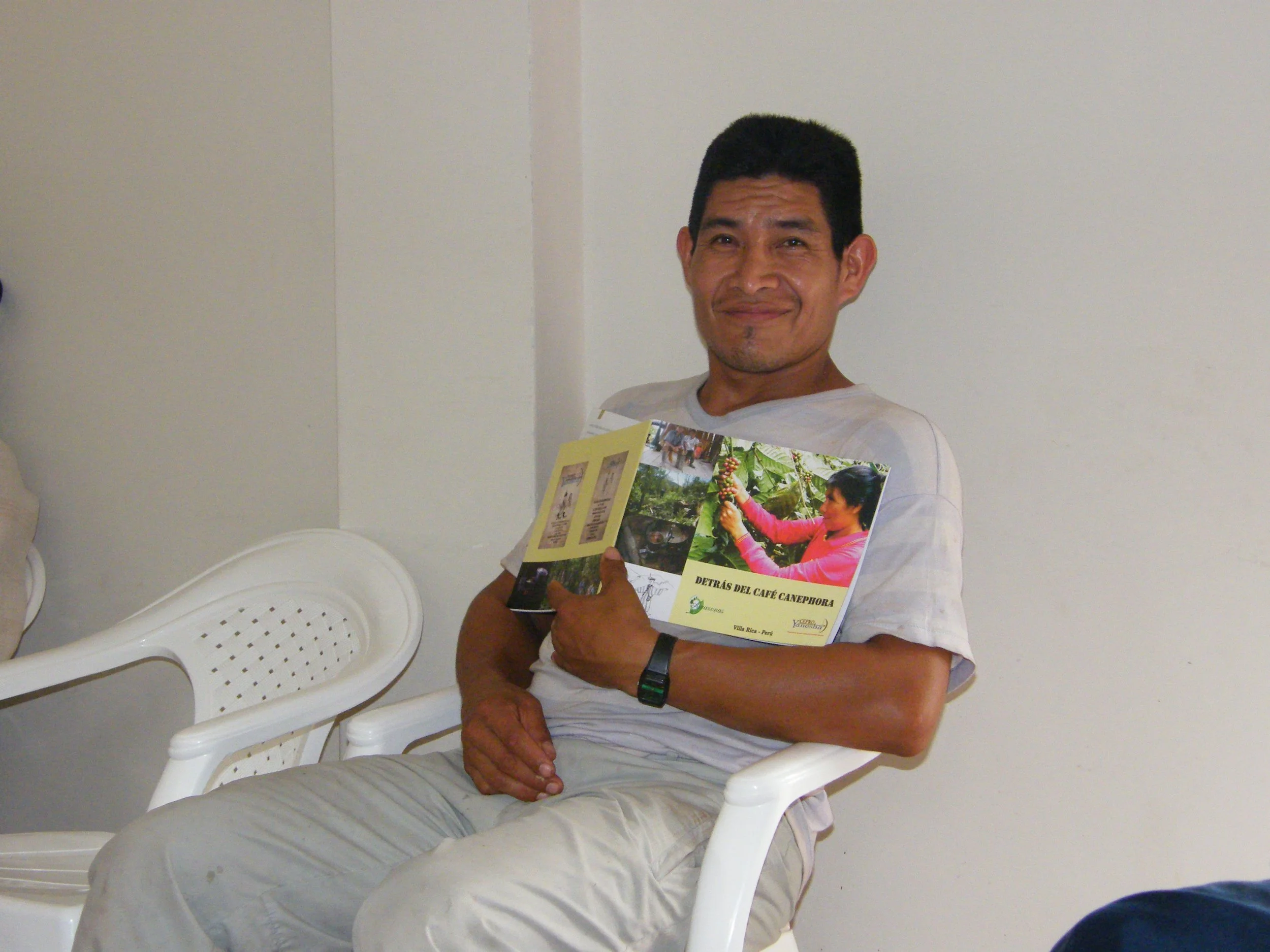yes, robusta
“It touched our heart to see how farmers were interested in making their coffee better.”
Jimmy, administration manager at CEPRO Yanesha
Remote, lost in the jungle, San Pedro plays by nature’s rules. The Yanesha know this in their bones. Their relationship with the wilderness, the mountains, and the rivers is carried on with the worshipping tribute that keeps their land secluded and protected. Monkeys, toucans, and many other wild species inhabit their home, and most producers live off the land, hunting, fishing, and cultivating fruit trees.
Canephora hasn’t been easy for them. “What is this?” someone would ask in the street, and when the farmer said, “It’s Robusta,” people in the street would wave it off and answer, “Ah, that’s little coffee, little coffee.” This reputation was mostly based on misconceptions. The coffee itself was good. Eventually, the farmers felt discouraged, some stopped producing coffee altogether. Others persisted. “They always tried to humiliate Canephora,” Says Julio. Martin also comments: “They didn’t take Canephora seriously.” “This is lentil coffee,” people would say to Rosalina in town, and if the coffee was sold, it would be at a very low price.
Something about how people spoke about this coffee and this region caught Gino and Jimmy’s attention. They decided to discover what it was and visited San Pedro. Back then, farmers mostly produced small quantities but on huge tracts of land, some as large as 100 hectares. When producers showed interest in improving their coffee, Gino and Jimmy took the challenge and started travelling to San Pedro, taking the long walk into the jungle, carrying the tools they needed to clean the land. After a long process of experimentation and processing assistance, they were happy: farmers discovered how they could indeed make better coffee.
We met Gino, general director, of Cepro Yanesha, through Rianne from Progreso, who hugely supported Cepro Yanesha in becoming a formal cooperative in 2016. In Milán, Gino talked about Canephora and its beautiful, carefully harvested flower, which we are also importing for the first time this year. Quite contrasting to the effect of coffee, its flower relaxes and helps to sleep. Two powerful remedies (and with the opposite effect) in one single plant. Only coffee.
These farmers make up our 2023 CEPRO Yanesha Blend
Cepro Yanesha works with nine producing groups in Perú. About 22% of the population in each community lives from the coffee they harvest. San Pedro de Pichanz is one of these communities and works with 13 farmers. Our Cepro Yanesha Blend comes from these 13 farmers.
THIS SIDE UP VALUE CHAIN:
THE PRICE YOU PAY: €9,71
CULTIVARS:
Robusta
ALTITUDE:
500-800 metres above sea level.
NOTABLE:
San Pedro de Pichanz is almost entirely a wild jungle. Farmers grow coffee in a small portion of their huge plots, some as big as 100 hectares. Coffee is 100% organic certified. Besides coffee, this year we bought coffee flowers that, quite contrasting to the effect of coffee, is calming, and helps to sleep. In San Pedro de Pichanaz, all the farmers work together during harvesting in a practice called ayni. Everyone works without payment, but works for each other.
KEY ACHIEVEMENTS:
2020/2021: first purchase of CEPRO Yanesha beans by This Side Up through EFICO.
2022: we met Gino at the Milán Crossover and started talking about the cooperative, its members and its way of working. First direct export to This Side Up.
PROCESSING:
Coffee is harvested at its ripest point, in baskets. Coffee is then floated and transported to one of the de-pulpers recently provided to the farmers by Cepro Yanesha. Coffee is then ferments for around 36 hours in enclosed tanks. Producers carry their coffee from their plots in their backs; only one of them has a donkey. Once the coffee is gathered in San Pedro, Cepro Yanseha picks it up in trucks and carries on the exporting process. Harvesting starts in June and July.
CEPRO YANESHA FARMERS:€5,00*
Is the total price Cepro Yanesha pays farmers in two rounds. So they pay 50% before the season starts and as soon as farmers start bringing the coffee in, this amount is discounted.
CEPRO YANESHA: €1,84
Cepro Yanesha costs for coordinating the coffee export include: transportation to San Pedro de Pichanz, storage, drying and hulling in Villa Rica Highland. It takes around three trips in a pick up truck to transport 7 tons of Robusta.
SHIPPING: €1,03
Total shipping costs from Puerto del Callao to Rotterdam + local clearance and warehousing.
THIS SIDE UP: €1,40
This Side Up compensation for spending time and resources importing this coffee, according to our most expensive Trade Model. Our work includes year-round contact with producers, managing export, shipping, import, warehousing, grading, sampling, finding and keeping roasting partners for all the coffees. For a full overview of what we do to earn our margin, see the Trade Models page.
FINANCING: €0,38
Average financing cost (5% of the sales price) we have to pay lenders - simply because we don’t have the money in the bank to buy such large amounts of coffee all at once. This ensures immediate payment to Cepro Yanesha when the coffee leaves the port.
REGENERATION: € 0,06
A standard TSU premium on all coffees designated exclusively to accelerate farmers’ own regenerative agriculture projects.
*These margins are guesstimates based, an educated calculation, based on information we received from our partner.
AVAILABLE FROM CEPRO YANESHA:
Cepro Yanesha - village lot - natural robusta
Cepro Yanesha - village lot - cascara
TASTIFY™ CUPPING NOTES :
Browse through our Tastify Archives on Google Drive.
CONTACT CEPRO YANESHA
Gino Sadler is the manager of Cepro Yanesha, sent him an email to find out more about their coffee and impressive cooperative structure. Our communication is solely in Spanish.
CONTACT Gino Sadler
EMAIL gerencia@ceproyanesha.com
TEL +51063465073
Av. Puerto bermudez no 825 Villa Rica, Perú
Photo Gallery:
You may use these images freely to promote Cepro Yanesha.
SAN PEDRO DE PICHANAZ
San Pedro de Pichanaz community belongs to the district of Villa Rica, province of Oxapampa, in the Pasco region. It is located at 550 to 600 meters above sea level, approximately one hour from the town of Cacazú, and two hours from the district of Villa Rica, on the way to Puerto Bermúdez. It is a privileged area surrounded by vast nature, bordering the San Matías San Carlos Nature Reserve. It is one of the few communities that can produce and sell canephora coffee.
In 1986, seeds were brought to San Pedro de Pichanaz to teach the community to cultivate exclusively canephora and arazá coffee and improve the agricultural production system. Five canephora varieties were introduced in the region and classified by the villagers according to the appearance of the grain: large grain, round grain, lentil grain, medium grain, and loquat-shaped grain. The seeds were given to six people to sow in a quarter of a block as a test to see if it was produced in the area, but not as a means of marketing. "They taught me to make coffee nurseries, they taught me to cure cattle, to cure guinea pigs, to dose chickens; that's what they taught." says a villager when explicitly asked about the teaching of canephora coffee.
Pichanz is divided into three sectors or villages: San Pedro, whose main product is Robusta, and run by Juan Javier Sebastián; San Francisco, also a Robusta coffee region and Asolis, which produces cacao. San Pedro de Pichanaz has been steadily growing; several ethnic groups, mainly the ya-neshas, some ashánincas and andean settlers inhabit it.
This is the first generation of Robusta coffee growers. It's quite admirable to notice how Robusta has indeed become the main economic activity in San Pedro de Pichanz, followed by achiote and cacao, and allows farmers to meet their basic needs: clothes, utensils, school, and housing. Thanks to their income, some of their children are now studying a professional careers outside the community.
Cepro Yanesha opened a new market and also the possibility of assisting farmers in improving their processing. Besides growing coffee and cacao, villagers developed the Bosque project, which seeks nature preservation. Also, the rivers, the plants, and the animals hold a special meaning for the community because they use them in many ways. Most of them bathe in the river, fish, and hunt. They also have a deep history and knowledge of medicinal plants such as Llocboret' (zarzaparrilla) and Choyoperet' (columna de anguila). By mixing these, it is believed the blood is purified of contagious diseases.
CEPRO YANESHA AND US
We heard about Cepro Yanesha through our partner Rhiane, from Progreso. Last summer, in the Milán Crossover event, we sat down with Gino and learned about their cooperative model, their interest in supporting original cultures in Perú, and their efforts to improve farmers' livelihood with coffee. We also tasted a beautiful batch of coffee flowers and decided to join forces.
*With information taken from the book, in Spanish, "Detrás del Café Canephora" written by Cepro Yanesha.




